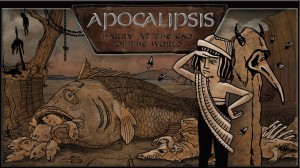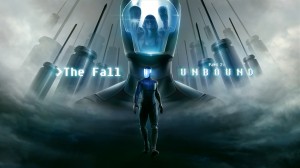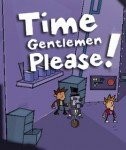Review for The Painscreek Killings page 2
Game information
“It’s a quiet, peaceful place and yet, somehow, foreboding. For it abounds in haunted spots, twilight tales, and local superstitions.”
Such is the description of the eponymous town from Disney’s animated The Legend of Sleepy Hollow. While the two settings are not connected, it was this very quote that ran through my mind as I played EQ Studios’ The Painscreek Killings, a thoroughly engaging and equally challenging first-person 3D adventure. Not for the faint of heart, or the faint of hardware requirements, this complex murder mystery places you in the midst of a tangled story that will keep you theorizing even when you’re not playing.
You play Janet Kelly, a journalist sent to the deserted town of Painscreek. In 1995, Vivian Roberts, the mayor’s wife and one of the town’s most beloved and respected citizens, was murdered. The case was never resolved and it signaled the death knell for the community itself. Within a few short years, the town was abandoned and is now being auctioned off, but your editor has sent you to take one last look into the events surrounding Vivian’s demise. And so you enter Painscreek, population none in the summer of 1999, with the task of discovering the murderer, motive and weapon used.
When you begin the game, you are warned that “there are neither helpful quest markers, nor any form of handholding throughout the game.” Save for a brief tutorial when you first arrive at Painscreek, which guides you through searching the sheriff’s office for a key to the town gates, this statement is absolutely true. This is a challenging game in which you have to scour your surroundings carefully, pay attention to the relationships between characters and locations, and above all, take notes. Lots and lots of notes. I really felt like I was conducting a proper cold case criminal investigation into Vivian’s death. This included making my own real life bulletin board with cards for the different people and locales involved, with strings connecting them together.
Most of the game plays like the searchable areas in the later Tex Murphy entries, presenting you with 3D scenes to carefully comb through. You need to rifle through drawers, crouch down and look under tables, and snoop around the sides of cupboards. Mostly you’ll be hunting for keys or combinations to locks, or for the ubiquitous diaries that the townsfolk kept, detailing the sordid events of murder, adultery, embezzlement, and mental instability that the seemingly quiet town was hiding. Directly manipulating drawers and cupboards to find what I needed really helped suck me into this experience.
Painscreek is an eerie place to wander through alone. Leaves blow along its deserted streets and empty building interiors suggest that people just walked out, never to return. Unwanted furniture, half-packed moving boxes, and various other odds and ends of discarded refuse are your only companions in the different structures you enter. It’s as if life just stopped here. The creepy mood is further enhanced by the sometimes melancholic, sometimes foreboding musical score, which consists primarily of a lone piano with only occasional embellishments from other instruments.
While exploring you’ll visit a number of locations such as the inn, a tiny church and its adjoining cemetery, the mayor’s opulent mansion, a hunting cabin in the woods, and of course the hospital. Not to spoil anything, but the hospital certainly gave me a jolt as I was roaming its shadowy corridors when… well, you’ll just have to see for yourself. Many of the settings have had their power shut off. Fortunately, early on you’ll discover a flashlight, which is a necessary tool for searching those structures that are otherwise shrouded in darkness. In case it isn’t apparent, Painscreek does an excellent job at making you feel like a complete outsider intruding on the intimate lives of the long-gone residents.
Your detective work will increasingly reveal why the game is named as it is. Vivian Roberts isn’t the only person to have died due to foul play here. A large part of your investigation is spent uncovering the connection between Vivian’s relatively recent death and events that happened twenty years earlier. Before long you’ll find that the body count mounts up rather quickly. This is one of the areas of the game where it’s important to keep good notes, as there are a fair number of connections between the different town citizens. Understanding those relationships is key to uncovering what exactly happened, though to go into specifics would risk spoiling the mystery at the core of this experience.
Your notes will also be critical in helping you determine where to search next. Often you’ll find keys in one part of Painscreek that you have to use elsewhere, but as per the game’s initial warning, rarely is it completely spelled out where you need to go to follow up a lead. I never found any of the connections to be illogical or unfair, though to be sure, this is a game that you have to invest in so you can’t just casually dip in and out or pay only passing attention.
As you proceed, you’ll find that success comes in spurts. You enter a new area that gives you a bunch of different clues to follow that are scattered all about the town. As you dig into these leads, many of them will prove to be dead ends or only offer a few additional details to flesh out the case. You’ll have to keep working through them all, usually getting down to the last one or two before discovering another location that suddenly offers many more avenues of inquiry. For the main investigation, most of what you need to do involves opening locks, either with keys, combinations or the occasional tool such as the useful slim jim which you can use to break into various vehicles. There are also a bunch of side quests that fill in more of the story but are otherwise optional. These tend to be more difficult to access than the central items, such as a particularly well protected safe hidden in a picture gallery.
Throughout your travels, you may very much get the feeling that you’re being watched. Painscreek has a local myth of a young serving girl who used to work at the mansion but then suddenly disappeared in the seventies. Ever since there have been unexplained sightings of such a girl, usually when the witness finds themselves in dire circumstances. Is there someone still living in this deserted town or has the supernatural well and truly taken hold? That’s something else your investigation will need to unravel.
The areas you traverse are quite realistically detailed. They’re also very functional, as nearly every drawer and cupboard you find can be opened, phones can be picked up, and light switches can be turned on and off (whether the switches still work or not is another matter). All exploring is done with the keyboard and mouse combination typical of such free-roaming first-person games. Positioning your view over an interactive object will pop up a brief text description of what you can do, such as “turn on” for light switches or “pick up” for items. Left-clicking on objects will take you to a close-up view that you can then rotate with the mouse. Be sure to view items from all sides, as sometimes important notes or clues are hidden. Some objects can be added to your inventory, while others must be returned after you’ve viewed them.
You can access your inventory with a simple keystroke. You also have a camera for taking pictures, which you can review at any time. This is very helpful for keeping track of important details, such as a combination scrawled on a brick wall, but isn’t a substitute for piecing together the broader story and events with your own notes. Any diaries or maps you pick up are added to special screens that can be easily opened. The default key mappings for these interface elements are all mnemonics, such as “I” for the inventory, “C” for camera, and “M” for maps. While this is helpful to begin with, I found the constant lunging across the keyboard to be a bit cumbersome, so fortunately the game allows you to remap them. (I set my inventory, diary entries, picture gallery, and maps to the “1”, “2”, “3”, and “Tab” keys respectively, whose close proximity to the WASD keys made them far more convenient to use.)
One other option that’s important to highlight is the “Toggle Run” switch, which is turned off by default. Although Painscreek is a small town, you will still find yourself covering long distances on your treks from the mansion to the hunting cabin or the inn to the hospital. While you can hold down a key to run, the ability to toggle running on and off with a single key tap is a very welcome one indeed. This is especially useful for a late timed sequence. I was able to pass it on my first try, but be forewarned that not only is it a timed sequence, it’s a particularly tense timed sequence. I can’t really hold that against the game, however, as it’s perfectly fitting and exactly what the game needs storywise at that particular point.
The Painscreek Killings can also be played using a controller. I didn’t have any issue with the default controls, though the options do allow remapping here too, just in case the setup isn’t to your liking. What the game does not provide, regardless of control scheme, is a fully functioning save system. You have a single autosave available to you throughout the entire game. Your progress is recorded whenever you enter a different location, and you can choose to save or not when you quit. When you first start playing, you are warned not to save if the game freezes or locks, or if your character gets stuck on some object and is unable to move. In the 15 hours of play time I took to reach the end, I only encountered one issue where I briefly fell through a bridge over a river. Thankfully a few steps in the water and I popped right back onto the bridge, but there were a couple of places where it would have been a nice security blanket to freely save my game to a different slot.
The town of Painscreek is divided into several areas separated by loading screens, which did not take too long. Most of the town exterior represents one such area, while important locations like the mansion, church, and hospital are their own separate regions. Unfortunately, although I didn’t encounter any serious technical problems, I did run into some performance issues. While the 3D presentation looks quite nice, the graphics are neither bleeding edge nor particularly well optimized, as I occasionally encountered spots where the game would pause momentarily before allowing me to continue on my way. This tended to happen in the main outdoor section. When I quickly turned to face a direction I hadn’t looked at recently, the game seemed to need to reload the graphical assets for that view before running smoothly again. Overall my PC was either at or above the recommended requirements, and even turning the graphics settings down did not have a big impact on the pausing issue. Based on the most common recommendation provided by the developers, it seems the biggest influencing factor for performance is with your hard drive (they recommend a solid state drive, which I did not have), so potential players would be well advised to ensure their computers are up to spec.
Although you are technically given an identity while playing, you never actually see Janet and she never speaks. Given that the town is deserted, of course, that’s not really an issue as there’s no one to talk to anyway. Even in their absence, you’ll find more than enough character from the various former townsfolk through the diaries you discover. You do encounter the occasional brief voice-over when listening to scattered phone or tape messages, with performances that are serviceable if not especially noteworthy. The writing in the different diaries, newspapers and other documents you find is fairly interesting, although grammatical issues crop up frequently. I never found the errors bad enough to interfere with my enjoyment of the game, but they are noticeable.
It’s through all the disparate connections between characters and locations across the span of two decades that Painscreek really delivers on its potential. In fact, even when I wasn’t playing I continued thinking about it. I kept coming up with various theories and trying to sort out how the different events were linked. (I mentioned my own bulletin board, right?) There are a number of fairly interwoven character stories told here that feel even more complex as only small tidbits are doled out at a time. This is a great game for those with active imaginations, though for those with over active imaginations it can also be a bit of a detriment. I know it sounds silly, but the tense atmosphere of Painscreek and the mysteries I discovered meant that I had a hard time playing after dark. That feeling of being watched got to be just a bit too stressful for me at times (but in a good way!).
The Painscreek Killings is an unabashedly challenging game. Challenging but fair. It’s an adventure you really have to dig into and keep good notes to help you through, but the setting and story are so compelling that you’ll do it because you want to, not because you have to. Both visually and audibly, the town creates a mood of melancholic desolation that sucks you in, at least if your computer is good enough to run it smoothly. If you’re prepared to invest some time and effort into approaching this mystery as you would a real investigation, this is an excellent and engrossing offering, the likes of which we don’t see nearly enough of anymore.





























